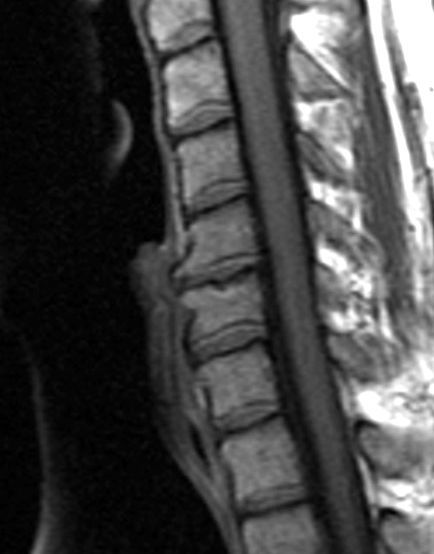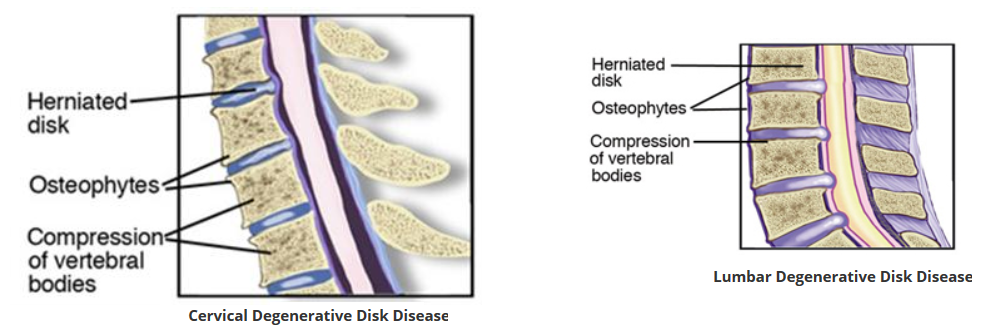nalco group
bone, muscle & joint pain physio
BOOK NOW / WHATSAPP ABOUT YOUR PAIN OR INJURY
- NOVENA 10 Sinaran Drive, Novena Medical Center #10-09, Singapore 307506
- TAMPINES 9 Tampines Grande #01-20 Singapore 528735
- SERANGOON 265 Serangoon Central Drive #04-269 Singapore 550265
Home > Blog > Physiotherapy > Spinal Physiotherapy > Conditions > Degenerative Disk Disease Physio
Degenerative Disk Disease Physiotherapy

Around 80% of the population will have some form of
at some point in our lifetimes.
Fortunately, the good news is that most of us will recover without the need for spinal surgery.
Conservative management such
as spinal physiotherapy works for many types of back pain, provides similar
results to those obtained from surgery. Yes, degenerative disk disease (DDD)
can be one of the many causes of back and neck pain. That being said, DDD is part of the
natural aging process, like getting gray hair, and in many cases is not
painful at all.
What Is Degenerative Disk Disease?
Your spine is made up of 33 vertebrae that are stacked on top of one another. Between each of these vertebrae is a rubbery piece of cartilage called an "intervertebral disc."
Imagine the disk as a tire, with gelatin filling the hole in the tire.
The tire is called the "annulus," and the gelatin is called the "nucleus." When we're young—under 30 years of age—the disc is made mostly of gelatin. As we age, and sometimes with injury, we start to lose some of that gelatin and the volume of the disc decreases, resulting in less space between the vertebrae.
This causes the spinal disc to become flatter and less flexible, leaving less space between each set of vertebrae. Sometimes bone spurs form in response to this degeneration of the disc, which could make the spine stiff.
Often, this flattening and additional stiffness to the spine is not at all painful.
But in some cases, when the rough surfaces of the vertebral joints rub together, patients may experience pain and inflammation. The nerve root, the point where a spinal nerve exits the spine and extends to other parts of the body, may become irritated or compressed (which leads to sciatica/herniated disc).
Disc degeneration may happen at multiple regions of the spine, or it may be limited to just one disc. But do remember, disc degeneration does not always lead to pain. For some people, however, it can cause a great deal of pain and disability.
You are more likely to develop DDD if you:
- Smoke
- Are obese
- Do heavy physical work
- Don't get very much exercise

How Does Degenerative Disk Disease Feel?
With DDD, you may experience mild to intense neck pain and back pain—or no pain at all:
- A degenerative disk in the neck may cause pain in the arm, shoulder, or neck.
- A degenerative disk in the low back may cause pain in the back, buttocks, or legs.
The pain is often aggravated with/by
- sitting
- bending
- reaching
- first thing in the morning
- after staying in any one position for a long time
In severe cases, when DDD results in pressure on the nerve root, it can lead to numbness, tingling, and even weakness in the arms or legs.
How Is It Diagnosed?
Our senior spinal physiotherapist will conduct a thorough evaluation that includes a review of your medical history, and will use screening tools to determine the likelihood of DDD.
For example, we may:
- Ask you very specific questions about the location and behavior of your pain, weakness, and other symptoms
- Ask you to fill out a body diagram to indicate specific areas of pain, numbness, and tingling
- Perform tests of muscle strength and sensation to determine the presence of pressure on the nerve
- Examine your posture and observe how you walk and perform other activities
- Measure the range of motion of your spine and your arms and legs
- Use manual (hands-on) therapy to evaluate the mobility of the joints and muscles in your spine
- Test the strength of important muscle groups
If you have muscle weakness, loss of sensation, or severe pain, diagnostic tests, such as an X-ray or MRI, may be needed.
That being said, X-ray evidence of wearing in the joints of the spine is found in people with back pain as well as in many who have never experienced back pain.
Studies have shown that disc degeneration is present in 40% of individuals under the age of 30 and present in over 90% of those aged 50 to 55 years, so do not panic if your X-ray or MRI shows “problems” with your discs; these are normal changes that happen from the age of 20 years and onward.
Our senior physiotherapists work closely with doctors and other health care providers to make certain that an accurate diagnosis is made and the appropriate treatment is provided.
Research shows that in all but the most extreme cases (usually involving muscle weakness or high levels of pain), conservative management such as spinal pain physiotherapy, has better results than surgery. Research also shows that results from conservative care and surgery are the same after 18 months post operatively.
After the evaluation, our senior physiotherapist suspects you have DDD and there are no major medical problems, then spinal physiotherapy treatment can start right away.
how our senior physiotherapists help you
Our senior physiotherapist's overall purpose is to help you continue to participate in your daily activities and life roles. We will design a treatment program based on both the findings of the evaluation and your personal goals.
Degenerative disc disease physiotherapy treatment program may include:
- Stretching and flexibility exercises. We will teach you specific exercises to improve movement in the joints and muscles of your spine, arms, and legs. Improving motion in a joint is often the key to pain relief.
- Strengthening exercises. Strong trunk muscles provide support for your spinal joints, and strong arm and leg muscles help take some of the workload off your spinal joints.
- Aerobic exercise. Regular aerobic exercise, such as walking, swimming, or taking a low-impact aerobics class, has been shown to help relieve pain, promote a healthy body weight, and improve overall strength and mobility—all important factors in managing DDD.
This might sound like a lot of exercise, but don't worry, clinical studies and research shows that the more exercise you can handle (without pain of course - we believe in little-to-no-pain-physiotherapy-approach), the quicker you'll get rid of your pain and other symptoms.
Your spinal physiotherapy treatment program may also include:
Manual therapy. We may apply manual (hands-on) therapy, such as massage, to improve movement in stiff joints and tight muscles that may be contributing to your symptoms.
Posture and body mechanics education. We may show you how to make small changes in how you sit, stand, bend, and lift—even in how you sleep—to help relieve your pain and help you manage your condition on your own.
Other physiotherapy treatment modalities that we may use includes:
- heat therapy
- cold therapy
- ultrasound therapy and Indiba Activ therapy to accelerate soft tissue healing
- computerized spinal decompression traction physiotherapy
- dry needling
- joint mobilization
- we may also recommend regular deep tissue release therapy to ease muscle spasms and pain
Note: Studies show that recurrence of neck and low back pain is common when a condition such as DDD is not properly treated. Regular performance of the exercises our senior physiotherapist chooses for you is extremely important to make sure your pain does not return.
